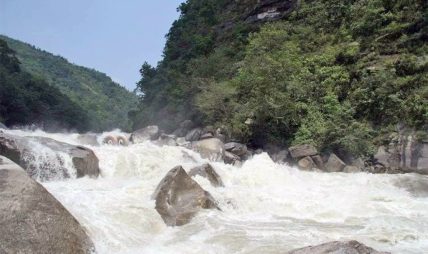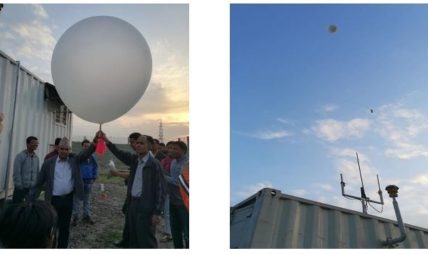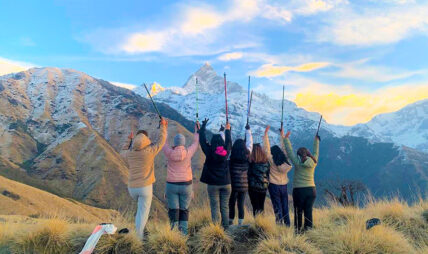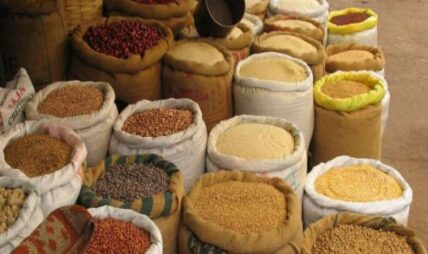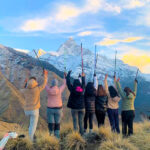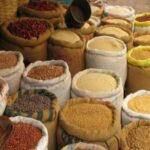
KATHMANDU. At around 10:15am on Friday, around 30 people had queued up in front of two tellers at Halchowk branch of Himalayan Bank, one of the oldest private sector banks in Nepal.
Normally, the branch office does not see such a crowd at that hour of the day. “But for the last seven to eight days, all branch offices of the bank have been witnessing a sharp jump in the number of customers,” Youma Shrestha, head of Himal Remit, the remittance wing of Himalayan Bank, told the Post.
The reason for this rush is the arrival of Dashain, the biggest festival of Hindus, who make up over 70 percent of the country’s population.
As Dashain officially started from Saturday, more people are expected to dash to the banks to withdraw deposits. Another chunk of people will visit banks to collect money sent by family members abroad.
Nepalis working abroad send home around Rs55 billion on an average per month through the formal banking channel, as per the Nepal Rastra Bank’s report of the last fiscal year, which ended in mid-July.
This flow of money, however, goes up by around 20 to 25 percent during Dashain, as millions of those working in the Gulf, Malaysia and other parts of the world send extra cash home to help their family members celebrate the festival in a decent manner.
Dashain is also the time when billions of rupees find their way into the bank accounts of around 75,000 civil servants, 108,000 teachers, 93,000 army personnel, 101,000 police and armed police personnel, and hundreds of thousands of those employed in the formal sector, who get a month’s salary as festive bonus.
Also, self-employed people and daily wage earners tap on to their savings during the festive period, while contractors and businesspersons collect due payments from clients, raising the cash flow to the level unseen during other months of the year.
Good or bad, all of this money generally ends up in consumption—mostly conspicuous.
Many economists would probably cringe at profligate spending that takes place during this time of the year, but, again, the festival is all about consumption, merrymaking and leisure.
One good place to check the pulse of those preparing for the festival is probably New Road, the oldest and most famous marketplace in the Kathmandu Valley. There, you can see shopping bags dangling from hands of hordes of people who have started splurging on clothes, footwear and accessories, as one important feature of Dashain is donning new clothes.
This age-old practice of buying new pair of clothes and shoes during the festival generally fascinates children. But grown-ups are no different, and they, too, end up buying stuffs for themselves and their relatives. This takes up a good deal of the family budget.
Other areas where grown-ups like to indulge are food and drinks. And for many, it would not be Dashain if they cannot feast on meat.
Meat consumption is common during this festival because hundreds of thousands of water buffalos, goats, chickens and ducks are killed to appease Goddess Durga. This Dashain, around 65,000 goats, mountain goats and sheep, worth around Rs1 billion, are expected to be slaughtered in the Valley. After these animals are offered to the Goddess, meat is consumed by family members and friends.
Along with meat, consumption of alcoholic beverage also goes up during the festival, while millions of rupees are placed on wagers as people bet on games of cards and kauda. A big chunk of earnings made by those who win in these bets is again spent on consumption.
It is, therefore, not surprising that at least 15 percent of annual consumer spending takes place during Dashain, according to Jishnu Mohan Bhattarai, director of the Central Bureau of Statistics (CBS).
This is a positive sign for the retail sector, as consumption that takes place during Dashain also contributes to economic growth.
While the festival is mostly about consumption, it should not mean the festival does not have a religious side to it. It definitely has, and many people fast and visit different temples on different days during the 15-day festival.
Yet, Dashain is also the time of the year when offices remain closed for six to eight days, which enables people to travel and reunite with family members living in distant places.
No wonder, the Kathmandu Valley, which has a population of around 2.5 million and a floating population of another 2.5 million, becomes virtually empty during the festive season. This mass movement of people generates business opportunities for those engaged in travel and transport sectors.
Already, all domestic air tickets have been sold out, and airlines have already added or are mulling over adding extra flights to cater to the growing demand. “There are no tickets available on any domestic sector,” said Rupesh Joshi, senior executive manager at Buddha Air. “We have added extra flights, but they are not sufficient to handle such a big rush.”
Because of mass temporary migration, coupled with arrival of international visitors during the peak tourist season, domestic airlines receive nearly 17 percent of the 1.45 million annual air travellers in October, with Nepali skies reporting an average 300 domestic flights per day in that month.
The traffic load is no different in land transport. Most of the tickets of buses, whose advance booking began on September 23, have been snapped. “No bus tickets are available till October 9,” said Basanta Bhandari, secretary of the Federation of Nepalese National Transport Entrepreneurs, an umbrella organisation of bus operators.
One of the reasons for shortage of bus tickets this year is reduction in the number of buses plying on the streets. Although the Federation oversees operation of around 6,000 buses, only around 1,100 are currently ferrying passengers. “Bus operators do not want to add buses on different routes because of greater demand for one-way tickets which raises operation cost; poor road condition, especially on Muglin-Narayangadh section, which raises travel time; and stringent rules introduced by the government, which bar buses from ferrying passengers exceeding the number of seats,” said Bhandari.
Although the last reason that Bhandari gave sounds absurd, what is true is demand for bus tickets is still very high, as people are waiting in queues with the hope of booking seats in advance. If bus operators fail to grab this business opportunity, public microbuses and sports utility vehicles may step in and benefit. “Dashain is a time when business opportunities suddenly grow and many retailers look forward to this festive season. And the good thing is the expectations of businesspersons are matched by spending intentions of consumers. All this makes the economy very vibrant during this time of the year, although production comes to a halt,” said CB
The Kathmandu Post, Published: 02-10-2016 09:19
वि.सं.२०७३ असोज १६ आइतवार १३:५२ मा प्रकाशित






